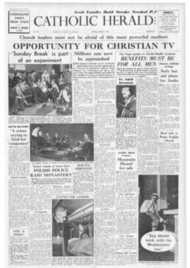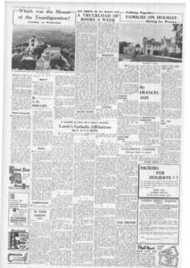Page 3, 1st August 1958
Page 3

Report an error
Noticed an error on this page?If you've noticed an error in this article please click here to report it.
Tags
Share
Related articles
'had I Churches To Fill .
Decent, Clean And Honest
May The Prodigal Daughter Come Home!
=pictures In Church: No. 312
Germany
Pictures in Church: No. 409, T1EPOLO'S great baroque fantasies, where
personifications of rivers and winds and the gods of Olympus come to life and in luminous brightness disport themselves in an elegant abandon, continued all his life to attract prodigal patrons. The society of the time enjoyed their apparent carefree thoughtlessness and hardly appreciated the work which created the stupendous equilibrium that kept the balance of all those cavorting figures.
Scintillating as the effect of Ticpolo's ceilings and murals must have been, charming in their delicacy of colour and nearly vertiginous with their play of space, it should never be forgotten that the mind that ordered all this frivolous entertainment was orderly, ,discip lined and extremely skilled.
Towards the end of his life, Tiepolo was invited by Charles 11 to decorate the Throne Room of the Royal Palace in Madrid. Eleven yards in length, he painted it in a remarkably short time and afterwards applied himself to seven altarpieces for the Aranjuez church. Tragically a year later these were destroyed and replaced, and the world will never know what it has lost. In his old age Ticpolo had added a depth to his religious works and the later masterpieces are the result of a contemplative withdrawal of this artist into solitude.
" The Agony in the Garden," with a number of other subjects from the Passion, was painted in such a period of withdrawal. Although it was a time of great
activity when the painter was overwhelmed with secular commissions, yet this is the radiant work of an imagination deeply concerned with spiritual values. Christ is portrayed apparently on the verge of break ing down -fainting and faint-hearted at the anticipation of the sufferings He knew were to come: in a lightning flash which illuminates the apostles in their sleep andsthe soldiers with their flaming torches, an angel is seen, and in its presence the Divinity of Christ is clearly asserted.
Profoundly tragic, wildly spectacular and even effusive, this picture represents the religious mood of the 18th century and is one of Tiepolo's greatest achievements in religious painting.
IRIS CONLAY
blog comments powered by Disqus









